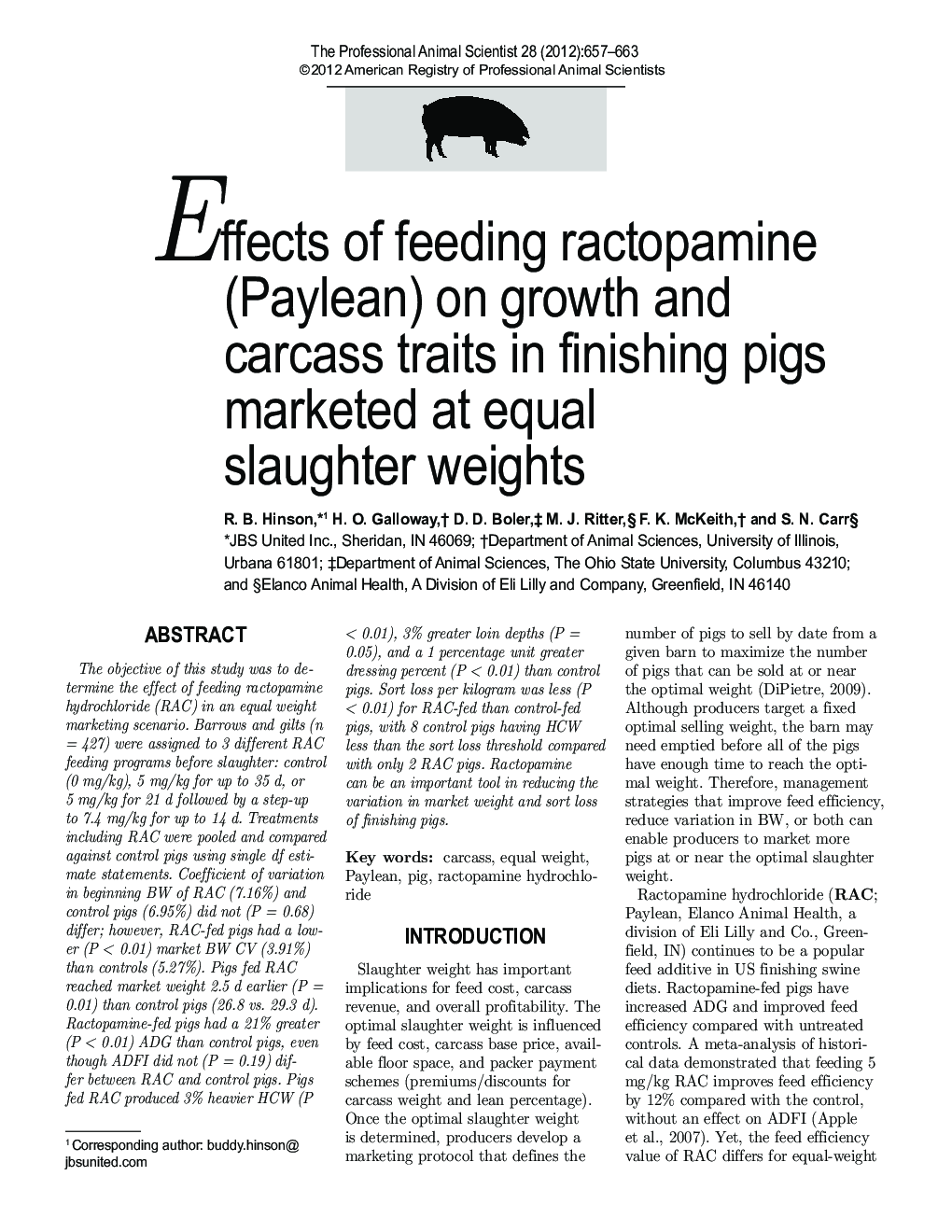| Article ID | Journal | Published Year | Pages | File Type |
|---|---|---|---|---|
| 2454073 | The Professional Animal Scientist | 2012 | 7 Pages |
Abstract
The objective of this study was to determine the effect of feeding ractopamine hydrochloride (RAC) in an equal weight marketing scenario. Barrows and gilts (n = 427) were assigned to 3 different RAC feeding programs before slaughter: control (0 mg/kg), 5 mg/kg for up to 35 d, or 5 mg/kg for 21 d followed by a step-up to 7.4 mg/kg for up to 14 d. Treatments including RAC were pooled and compared against control pigs using single df estimate statements. Coefficient of variation in beginning BW of RAC (7.16%) and control pigs (6.95%) did not (P = 0.68) differ; however, RAC-fed pigs had a lower (P < 0.01) market BW CV (3.91%) than controls (5.27%). Pigs fed RAC reached market weight 2.5 d earlier (P = 0.01) than control pigs (26.8 vs. 29.3 d). Ractopamine-fed pigs had a 21% greater (P < 0.01) ADG than control pigs, even though ADFI did not (P = 0.19) differ between RAC and control pigs. Pigs fed RAC produced 3% heavier HCW (P < 0.01), 3% greater loin depths (P = 0.05), and a 1 percentage unit greater dressing percent (P < 0.01) than control pigs. Sort loss per kilogram was less (P < 0.01) for RAC-fed than control-fed pigs, with 8 control pigs having HCW less than the sort loss threshold compared with only 2 RAC pigs. Ractopamine can be an important tool in reducing the variation in market weight and sort loss of finishing pigs.
Related Topics
Life Sciences
Agricultural and Biological Sciences
Animal Science and Zoology
Authors
R.B. Hinson, H.O. Galloway, D.D. Boler, M.J. Ritter, F.K. McKeith, S.N. Carr,
